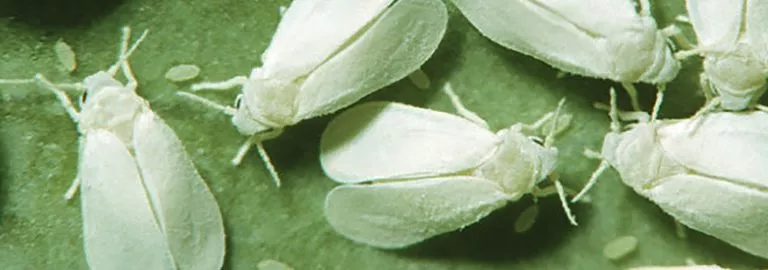Read our handy guide on how to prevent and control whiteflies in your garden to protect your veggies and flowers.
Whitefly
Adult whitefly are about 2mm long, that typically feed on the undersides of plant leaves. They are a tiny, white-winged, moth-like insect, and are relatively easy to see on infested plants. They produce a sugary substance called honeydew on leaves, stems, and fruit.
Whiteflies are a common pest, but those that affect outdoor crops such as cabbages, rhododendrons, and even viburnum are not the same species as those annoying clouds of insects that waft around the greenhouse. Both are called whiteflies, but they are specific to their host plants and require different modes of control.
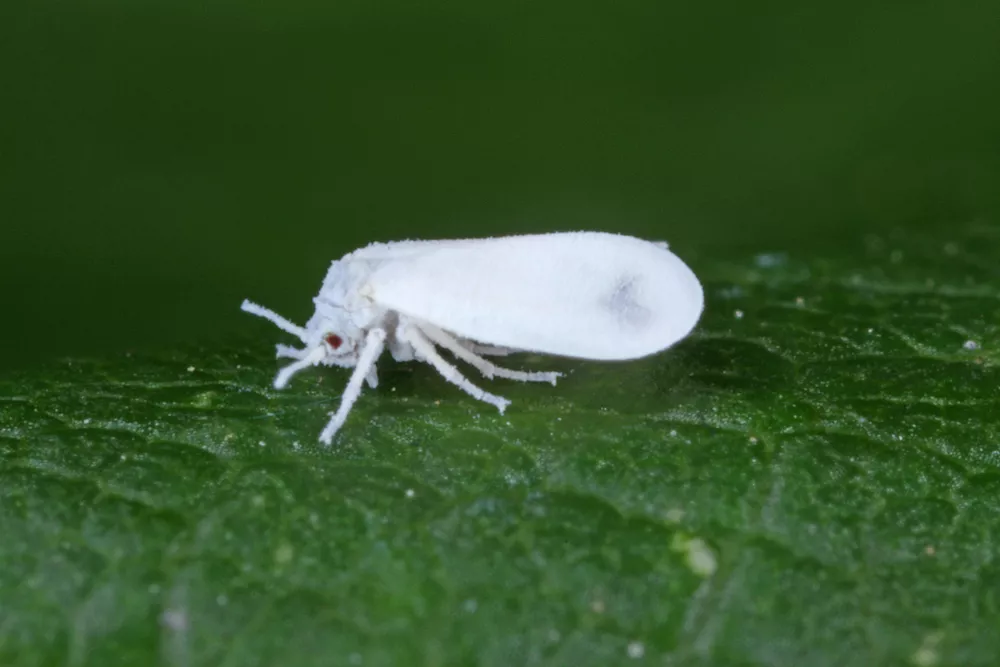
Symptoms
A noticeable white, waxy substance saturating the leaves is a sure sign of infestation. The female whitefly can lay up to 200 eggs at a time. They will lay eggs on plants, which hatch, and then the young start sucking the sap out of the host plant causing stunted growth, and if left untreated, will cause destruction. If you disturb a plant that has a whitefly infestation, you will see a cloud of insects flying up off the plant.
There are two types of damage that whitefly can cause to a plant; firstly, direct damage which is caused by the sucking of juices causing leaf damage. Secondly is indirect damage, which is caused by diseases and is transferred to the plant from the insect’s mouthparts. A severe infestation can cause wilting and a loss of energy for the plant.
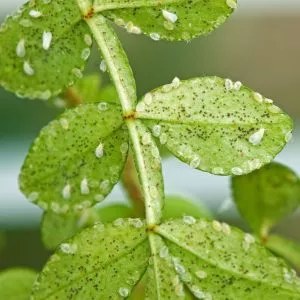
How to Prevent and Control Whiteflies
Inspect plants before you bring them home to check for any sign of infestation. We recommend keeping any new plants away from your existing ones for a few weeks to monitor any pest activity and keep the problem contained.
The stronger the plant, the less likely it is to be infested with a pest like whitefly, we recommend regularly feeding your plants to keep them strong and healthy. Try a good All Purpose Plant Food like Westland Boost.
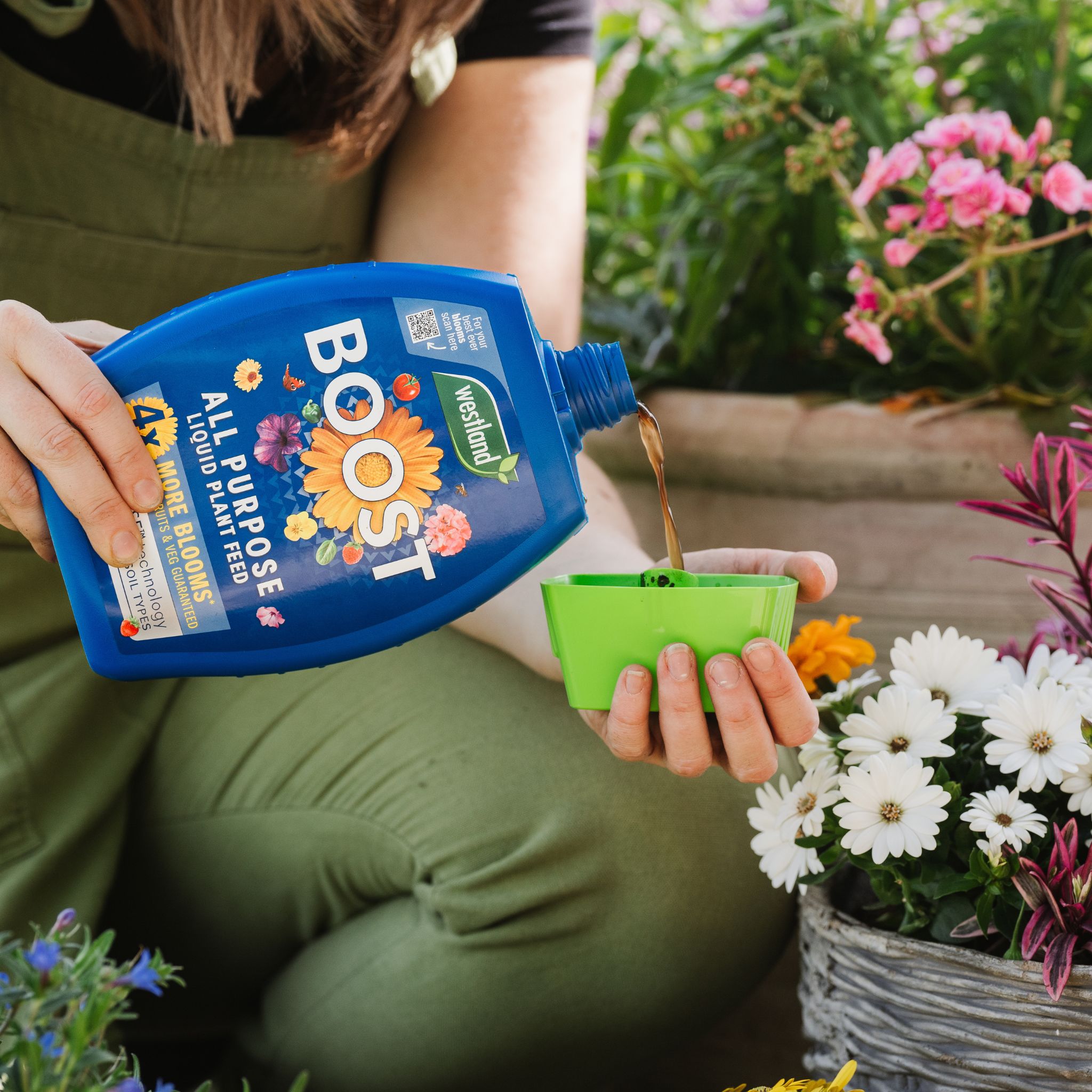
Removing any unwanted plants from the greenhouse will reduce the number of host plants for glasshouse whiteflies to thrive on.
Planting French and Mexican marigolds tend to repel whiteflies, although this is not a perfect solution for an existing problem, and is more effective at the first signs of an attack.
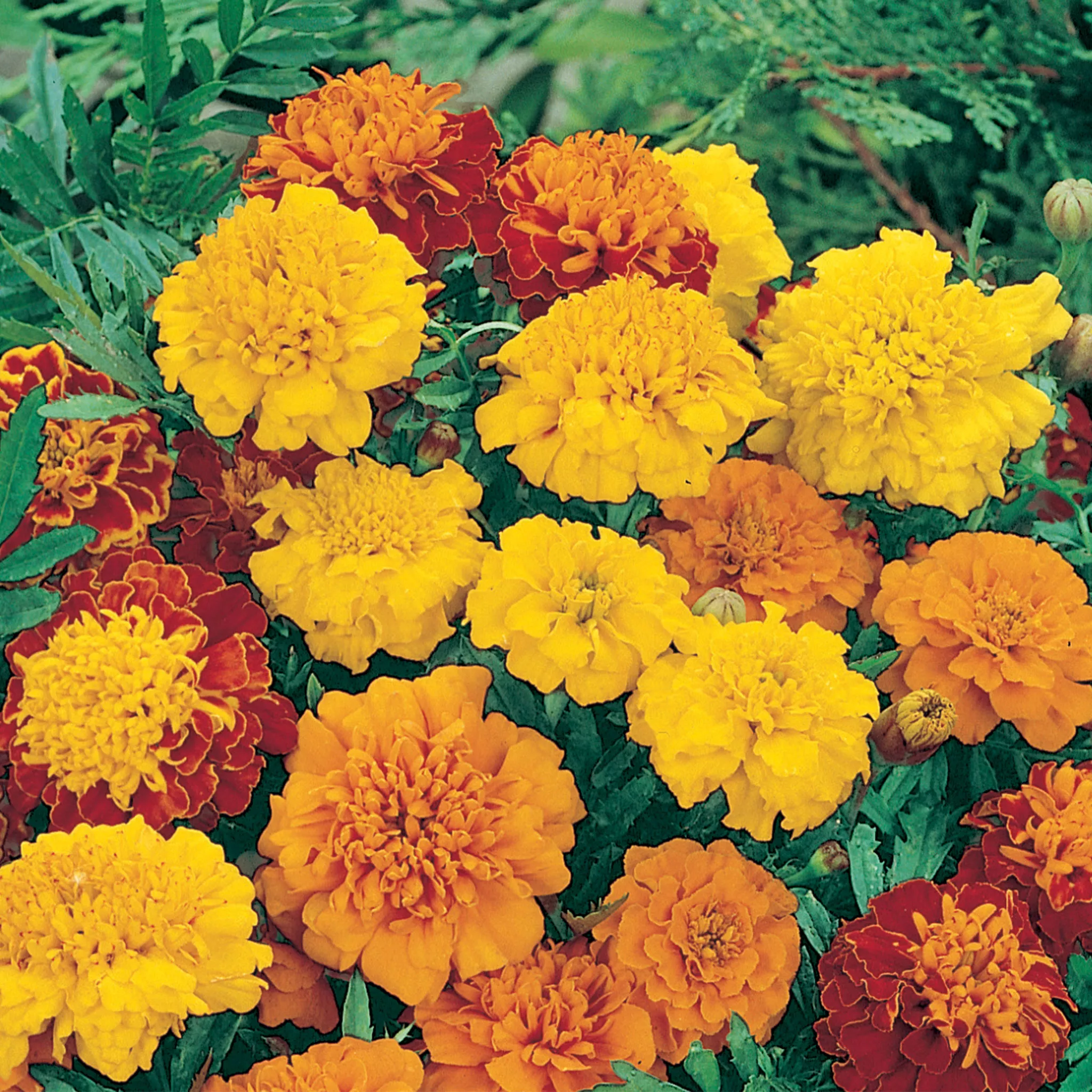
In the garden;
- Avoid overfeeding with high nitrogen fertilisers that encourage soft and also sappy growth.
- Cover young cabbage plants with horticultural fleece to keep flying insects at bay.
Monitor
Growing Success Whitefly Traps attract small flying pests to the vibrant yellow trap. They become attached to the natural adhesive coating which the Whitefly and similar flying pests find impossible to leave. They are coated on both sides with a non-drying glue that will last for months.
Hang yellow sticky traps above or among the plants to trap whiteflies and stop them from reaching the plant. This will also help monitor whitefly activity to see if your infestation is getting worse. We recommend dating your trap with a marker pen and taking a photo at certain intervals to track the level of infestation.
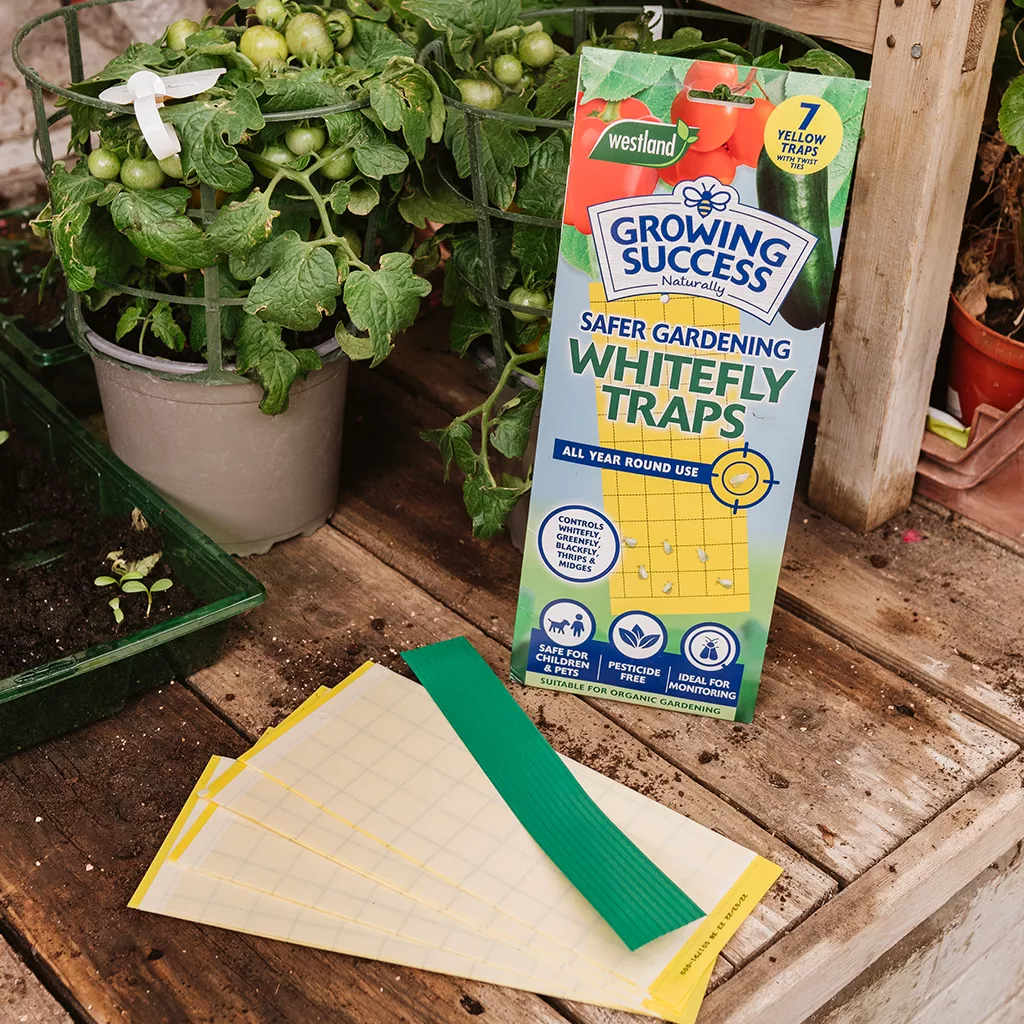
Control of Whiteflies
Keeping natural predators around will prevent and keep whitefly populations under control. Other insects such as spiders, ladybirds, and also hoverfly will attack whiteflies. If you are considering introducing an insect to assist with your problem, ensure you do your research as you could end up creating an even bigger insect problem. You could try adding a Ladybird house to your garden to help control them.
If you have an established population we recommend using Resolva Bug Killer to treat whitefly. Use this spray on edibles, roses, and flowers in gardens as well as greenhouses. Do not use this product to prevent whiteflies, as it has no residual effect – in other words, the pest needs to be there to control it.
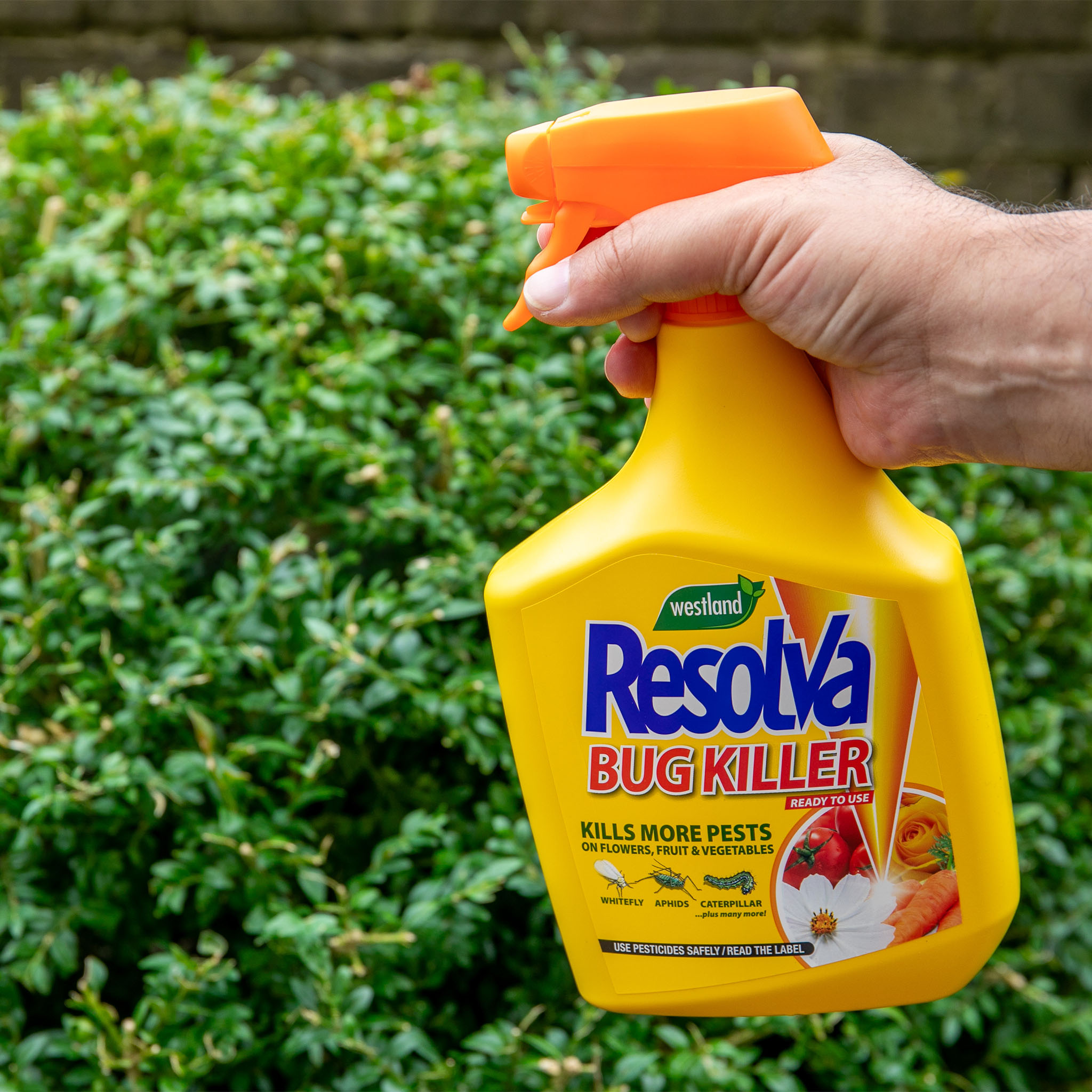
In greenhouses, it is possible to use greenhouse fumigators Our Deadfast Greenhouse Smoke Generator will kill flying and crawling insects, and no need to remove plants before use.
Always read the label. Use pesticides safely.

